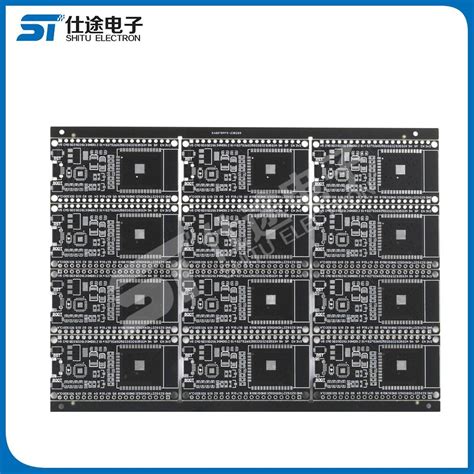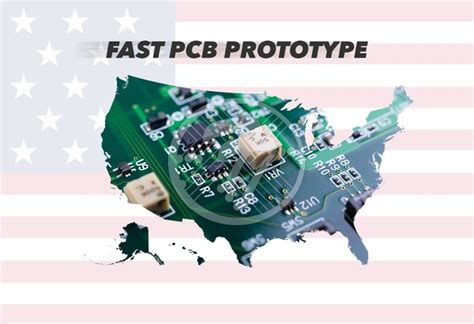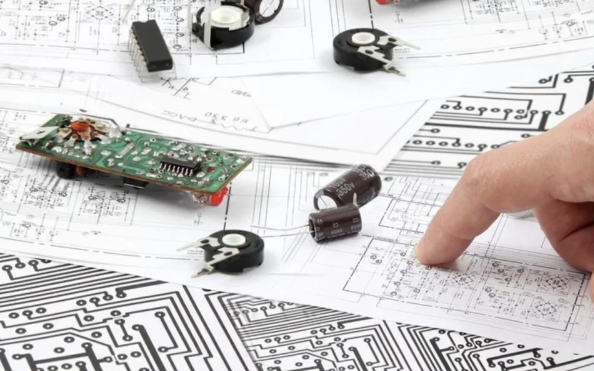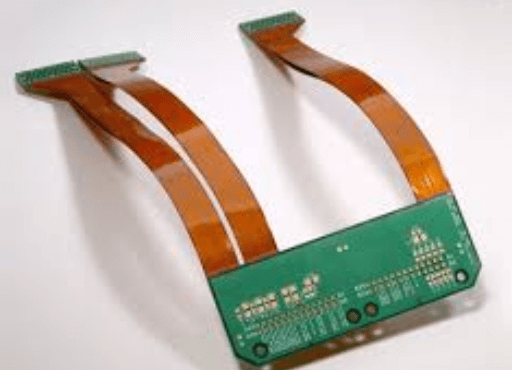Global PCB Manufacturing Leaders Reshaping Electronics
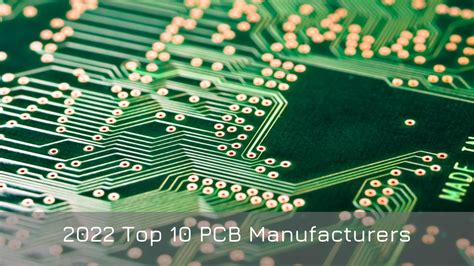
Key Takeaways
When navigating the PCB manufacturing landscape, you’ll find that industry leaders are redefining how electronics are designed, produced, and scaled globally. The dominance of top PCB manufacturing companies stems from their ability to balance PCB manufacturing cost efficiency with cutting-edge innovation, enabling them to deliver solutions for applications ranging from consumer gadgets to advanced aerospace systems. These firms invest heavily in automation and AI-driven processes, optimizing production cycles while minimizing waste—a critical factor in sustaining a competitive PCB manufacturing business.
Sustainability has emerged as a cornerstone for large-scale operations, with companies adopting eco-friendly materials and energy-efficient practices to reduce environmental impact. Advanced recycling techniques and lead-free solder alternatives are now standard, aligning with global regulations and consumer expectations. Meanwhile, breakthroughs in PCB manufacturing technology—such as high-density interconnect (HDI) boards and flexible PCBs—are pushing the boundaries of what’s possible in compact, high-performance electronics.
However, challenges like supply chain volatility and rising raw material costs continue to test resilience. Leading manufacturers address these hurdles through strategic partnerships and localized production hubs, ensuring stability without compromising quality. Emerging markets in Asia, Africa, and South America are becoming focal points for expansion, driven by growing demand for affordable yet sophisticated electronics.
For businesses exploring collaborations, platforms like Andwin PCBA highlight how integrating end-to-end services—from prototyping to mass production—can streamline operations. As the industry evolves, staying ahead requires not only mastering technical innovation but also anticipating shifts in PCB manufacturing cost structures and consumer needs. The future will reward those who balance agility with sustainability, cementing their role as pioneers in the next wave of tech evolution.

Introduction to the PCB Industry’s Global Impact
The PCB manufacturing industry serves as the backbone of modern electronics, enabling the seamless integration of circuits in everything from smartphones to advanced medical devices. As PCB manufacturing companies expand their global footprint, they’re not only meeting rising demand but also reshaping how industries approach innovation and scalability. Today, over 60% of the world’s electronics rely on printed circuit boards, making the efficiency and precision of PCB manufacturing processes critical to maintaining technological progress.
You might wonder how these companies balance pcb manufacturing cost with the need for cutting-edge quality. The answer lies in economies of scale, automation, and strategic material sourcing. Larger players leverage high-volume production to reduce per-unit expenses while investing in R&D to push design boundaries. For instance, advancements in multi-layer PCB fabrication have enabled thinner, more energy-efficient devices—a necessity for wearables and IoT applications.
Tip: When evaluating a pcb manufacturing business, consider its adaptability to emerging technologies like 5G or AI-driven automation. Partners that prioritize agile production methods often deliver better long-term value.
Sustainability is another cornerstone of modern pcb manufacturing, with leading firms adopting eco-friendly materials and waste-reduction practices. Innovations such as lead-free soldering and water recycling systems not only lower environmental impact but also align with stricter global regulations. This shift isn’t just ethical—it’s becoming a competitive advantage as consumers and corporations prioritize greener supply chains.
The pcb manufacturing cost equation also factors in geopolitical dynamics, from trade policies to regional labor markets. Companies diversifying production hubs across Asia, Europe, and the Americas mitigate risks while ensuring faster delivery times. By combining localized expertise with global standards, they maintain resilience in an ever-evolving market.
From smartphones to satellites, the pcb manufacturing industry remains indispensable. Its ability to innovate while managing costs and sustainability challenges will define the next era of electronics—and your devices depend on it.
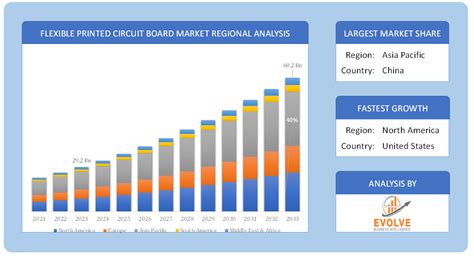
Key Players Dominating the PCB Manufacturing Landscape
When you look at the global PCB manufacturing industry, a handful of PCB manufacturing companies stand out for their scale, innovation, and market influence. These leaders not only shape the production of essential components for electronics but also drive trends in PCB manufacturing cost optimization and supply chain efficiency. Companies like Zhen Ding Tech, Unimicron, and TTM Technologies dominate the market, collectively accounting for a significant share of the world’s high-density interconnect (HDI), flexible, and rigid-flex PCB output. Their operations span continents, with manufacturing hubs strategically located to serve industries ranging from consumer electronics to aerospace.
What sets these giants apart is their ability to balance PCB manufacturing business demands with cutting-edge R&D. For example, Samsung Electro-Mechanics and Nippon Mektron invest heavily in advanced materials and automation to reduce PCB manufacturing cost while improving reliability. You’ll notice that many of these firms prioritize partnerships with tech innovators—think Apple, Huawei, or Tesla—to co-develop bespoke solutions for next-gen devices. This synergy ensures their production lines stay agile, adapting to shifts like the rise of 5G infrastructure or electric vehicle adoption.
However, scaling a PCB manufacturing business isn’t without challenges. Raw material volatility, environmental regulations, and the need for ultra-precision in miniaturized designs add layers of complexity. Leaders mitigate these risks through vertical integration, controlling everything from substrate production to final assembly. Sustainability has also become a focal point, with top players adopting closed-loop water systems and energy-efficient processes to align with global ESG standards.
For anyone analyzing the PCB manufacturing ecosystem, it’s clear that these key players don’t just follow market trends—they create them. By mastering the interplay of innovation, cost management, and strategic expansion, they cement their roles as indispensable partners in the electronics value chain.
Innovations Driving Next-Generation Electronics Development
The relentless pursuit of innovation in PCB manufacturing is accelerating the development of next-generation electronics, enabling smarter devices, faster connectivity, and more efficient systems. Leading PCB manufacturing companies are redefining industry standards by integrating cutting-edge technologies like high-density interconnect (HDI) designs, flexible substrates, and embedded component solutions. These advancements address the growing demand for miniaturization, durability, and performance in applications ranging from 5G infrastructure to wearable tech.
A critical focus for manufacturers is optimizing PCB manufacturing cost without compromising quality. Techniques such as automated optical inspection (AOI) and advanced panelization strategies reduce material waste and streamline production cycles. For instance, the adoption of additive manufacturing processes allows for precise layering of conductive inks, slashing expenses associated with traditional etching methods. This cost-efficiency is vital for sustaining competitiveness in the PCB manufacturing business, particularly as global supply chains face pressure from fluctuating raw material prices.
| Innovation | Impact on Electronics | Key Players |
|---|---|---|
| HDI Technology | Enables ultra-compact, high-speed PCBs | AT&S, Unimicron |
| Flexible PCBs | Supports bendable, lightweight devices | Nippon Mektron, TTM Technologies |
| Embedded Components | Reduces board footprint and latency | Samsung Electro-Mechanics |
Emerging materials like low-loss dielectrics and thermally conductive substrates further enhance signal integrity and heat dissipation, critical for AI-driven systems and electric vehicles. Additionally, partnerships between PCB manufacturing companies and semiconductor giants are fostering co-design frameworks, ensuring seamless integration of chips and boards.
As sustainability becomes a priority, innovations such as lead-free soldering and recyclable laminate materials are reshaping production practices. These efforts not only align with regulatory demands but also reduce long-term PCB manufacturing cost by minimizing environmental penalties.
Ultimately, the synergy between technological breakthroughs and strategic cost management is propelling the PCB manufacturing business into new frontiers, empowering industries to meet the evolving needs of a hyper-connected world.
Sustainability Initiatives in Large-Scale PCB Production
As PCB manufacturing scales to meet global demand, leading PCB manufacturing companies are prioritizing sustainability to reduce environmental impact while maintaining efficiency. You’ll find that many industry leaders now integrate energy-efficient manufacturing processes and renewable energy sources into their operations, aiming to lower PCB manufacturing cost long-term while aligning with global climate goals. For instance, advanced recycling systems for copper and other materials minimize waste, reducing raw material consumption by up to 40% in some facilities.
Innovations like water-saving etching techniques and lead-free soldering not only comply with stringent environmental regulations but also enhance product safety. Companies are also adopting circular economy models, reusing byproducts from PCB manufacturing business workflows to create secondary materials for other industries. These efforts are often supported by certifications such as ISO 14001 and partnerships with eco-conscious suppliers, ensuring transparency across the supply chain.
Cost remains a critical factor, but sustainable practices are proving economically viable. Investments in solar-powered factories or AI-driven resource optimization tools may raise initial PCB manufacturing cost, yet they yield significant savings through reduced energy bills and waste disposal fees. Additionally, consumers and corporations increasingly favor suppliers with robust sustainability credentials, creating a competitive edge for forward-thinking PCB manufacturing companies.
Challenges persist, such as balancing scalability with eco-friendly innovation, but the shift toward greener practices is reshaping the industry. By prioritizing sustainability, large-scale PCB manufacturing isn’t just meeting regulatory demands—it’s driving a paradigm shift where environmental responsibility and business growth coexist.
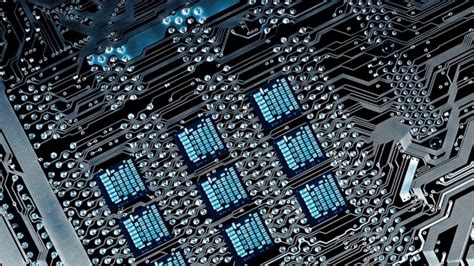
Technological Advancements Shaping Modern PCB Design
When you think about the electronics powering today’s innovations—from smartphones to autonomous vehicles—PCB manufacturing lies at the heart of their functionality. Leading PCB manufacturing companies are leveraging cutting-edge technologies to redefine how circuits are designed, produced, and integrated. Advanced tools like high-density interconnect (HDI) techniques and flexible substrates now enable ultra-thin, multi-layered boards that meet the demands of miniaturized, high-performance devices. These breakthroughs not only enhance product capabilities but also optimize PCB manufacturing cost by reducing material waste and improving production efficiency.
The adoption of additive manufacturing and 3D printing is another game-changer, allowing rapid prototyping and customization for niche applications. Imagine designing a PCB layout in hours rather than weeks, thanks to AI-driven software that predicts signal integrity issues and thermal performance. Such tools empower engineers to iterate faster, slashing time-to-market for next-gen electronics. For PCB manufacturing businesses, this translates to a competitive edge in industries like 5G infrastructure, medical devices, and IoT ecosystems, where precision and reliability are non-negotiable.
Automation is also reshaping the sector. Robotic assembly lines and machine learning algorithms now handle tasks from solder paste application to quality control, minimizing human error and scaling production. This shift addresses the growing complexity of circuits while keeping PCB manufacturing cost manageable, even for high-mix, low-volume orders. Additionally, embedded component technology—where passive components are integrated directly into the board—reduces footprint and improves durability, critical for aerospace and automotive applications.
Sustainability is no longer optional. Top-tier manufacturers are adopting lead-free soldering and recyclable materials to align with global environmental standards. By optimizing energy consumption during production and reducing hazardous waste, these companies balance innovation with eco-responsibility.
Ultimately, staying ahead in PCB manufacturing means embracing these advancements while navigating challenges like supply chain volatility and evolving consumer expectations. As technology continues to evolve, the ability to adapt will define which companies lead the next wave of electronics innovation.
Challenges Faced by Leading PCB Manufacturers Worldwide
Navigating the complexities of PCB manufacturing requires balancing innovation with operational efficiency, and leading PCB manufacturing companies face a unique set of hurdles. One pressing issue is the volatility of raw material costs, which directly impacts PCB manufacturing cost and profitability. Fluctuations in copper, laminates, and specialty chemicals—combined with rising energy prices—force businesses to rethink sourcing strategies and lean into economies of scale. Additionally, stringent environmental regulations demand investments in sustainable practices, such as reducing chemical waste or adopting recyclable materials, adding layers of complexity to the PCB manufacturing business.
Supply chain resilience remains another critical challenge. Global disruptions, from geopolitical tensions to logistics bottlenecks, threaten timely delivery of components, forcing manufacturers to diversify suppliers or regionalize production. Meanwhile, the rapid pace of technological advancement compels companies to continuously upgrade equipment and processes. High-density interconnect (HDI) designs, embedded components, and flexible PCBs require cutting-edge machinery and skilled labor, driving up capital expenditures.
Competition from emerging markets further intensifies pressure. While established players dominate high-reliability sectors like aerospace or medical devices, smaller firms in cost-sensitive regions undercut prices for standard boards. This dynamic pushes PCB manufacturing companies to specialize in niche markets or adopt advanced automation and AI-driven analytics to streamline workflows.
Finally, talent shortages loom large. The convergence of electronics and software demands expertise in both traditional PCB manufacturing and emerging fields like IoT integration. Bridging this skills gap requires partnerships with educational institutions and robust training programs.
For businesses in the PCB manufacturing business, overcoming these challenges hinges on agility, innovation, and strategic foresight—key traits for staying ahead in a rapidly evolving industry.
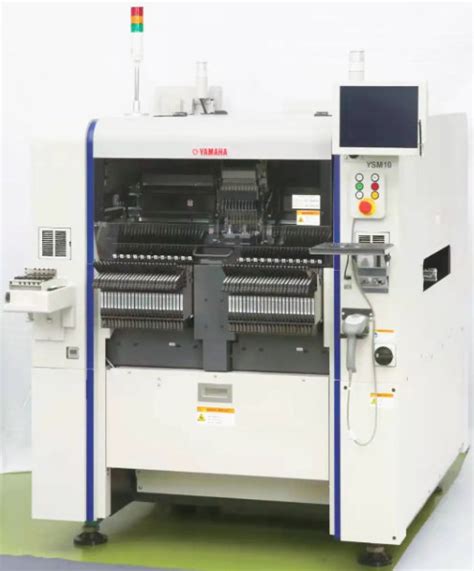
Emerging Markets and Global Expansion Strategies
As PCB manufacturing becomes increasingly vital to global tech ecosystems, leading PCB manufacturing companies are prioritizing expansion into emerging markets to secure growth and diversify supply chains. Regions like Southeast Asia, Eastern Europe, and parts of Africa are attracting investments due to their lower PCB manufacturing cost, skilled labor pools, and proximity to growing consumer electronics demand. By establishing local production hubs, companies can reduce logistical complexities and tariffs while tailoring solutions to regional needs—whether for automotive electronics in Eastern Europe or IoT devices in India.
To compete effectively, businesses are adopting hybrid strategies that blend onshore and offshore operations. For instance, while high-volume production might shift to cost-efficient markets, R&D and advanced PCB manufacturing business segments often remain in tech hubs like Japan or Germany. Automation and AI-driven processes further streamline operations, enabling firms to maintain quality while scaling output. Sustainability also plays a role: manufacturers entering new markets increasingly prioritize eco-friendly practices, such as reducing chemical waste or adopting renewable energy, to align with global ESG standards.
However, challenges persist. Fluctuating raw material costs, geopolitical tensions, and varying regulatory frameworks complicate expansion plans. To mitigate risks, top players leverage partnerships with local governments and suppliers, ensuring compliance and fostering long-term stability. By balancing PCB manufacturing cost efficiencies with innovation, these companies not only capture emerging opportunities but also reinforce their roles as critical enablers of next-generation electronics.
Digital transformation tools, like real-time supply chain analytics, are becoming indispensable for managing global operations. These technologies help manufacturers adapt to rapid shifts in demand—such as the surge in 5G infrastructure or electric vehicle components—while optimizing resource allocation. As markets evolve, agility and strategic localization will define which PCB manufacturing companies lead the charge in reshaping the electronics landscape worldwide.
Future Outlook for PCB Industry Leaders in Tech Evolution
As technology accelerates, PCB manufacturing companies are positioning themselves at the forefront of innovation to meet evolving demands. The integration of advanced materials, such as high-frequency laminates and flexible substrates, is redefining PCB manufacturing capabilities, enabling smaller, faster, and more efficient designs. You’ll see leaders prioritizing investments in automation and AI-driven production systems to streamline PCB manufacturing costs while maintaining precision. These advancements not only boost scalability but also address the growing complexity of applications like 5G infrastructure, electric vehicles, and IoT devices.
Sustainability remains a critical focus, with top players adopting eco-friendly practices—from reducing chemical waste to recycling copper—to align with global environmental standards. This shift not only strengthens their PCB manufacturing business models but also appeals to clients prioritizing green supply chains. However, challenges like supply chain volatility and geopolitical trade dynamics require agile strategies. Companies leveraging localized production hubs and regional partnerships are better equipped to mitigate risks while expanding their global footprint.
Emerging markets in Southeast Asia, Africa, and South America present untapped opportunities for growth, driven by rising electronics consumption and government incentives. To stay competitive, industry leaders must balance cost-efficiency with R&D investments in next-gen technologies like embedded components and additive manufacturing. As the line between hardware and software blurs, collaboration with semiconductor and software innovators will become indispensable.
Ultimately, the future of PCB manufacturing hinges on adaptability. Companies that master hybrid workflows—blending traditional processes with cutting-edge tech—will lead the charge in shaping tomorrow’s electronics landscape.
Conclusion
As you navigate the evolving landscape of PCB manufacturing, it’s clear that industry leaders are not only addressing today’s technical demands but also shaping tomorrow’s innovations. The world’s largest PCB manufacturing companies have become pivotal in driving advancements across industries, from consumer electronics to automotive systems, by delivering cutting-edge solutions that prioritize precision, scalability, and reliability. However, balancing PCB manufacturing cost with quality remains a critical challenge, especially as materials and labor expenses fluctuate in a dynamic global market. To stay competitive, top-tier firms are adopting automation, AI-driven design tools, and sustainable practices—strategies that streamline operations while minimizing environmental impact.
For those entering the PCB manufacturing business, understanding these trends is essential. The shift toward high-density interconnect (HDI) boards and flexible PCBs underscores the industry’s commitment to meeting the needs of next-gen devices like wearables and IoT systems. Meanwhile, sustainability initiatives—such as reducing chemical waste and recycling copper—are reshaping large-scale production norms. As emerging markets expand, leading manufacturers are leveraging strategic partnerships and localized facilities to reduce lead times and enhance supply chain resilience.
Looking ahead, the success of PCB manufacturing hinges on continuous innovation and adaptability. Companies that invest in R&D while optimizing PCB manufacturing cost structures will likely dominate the market, enabling faster prototyping and mass production for an increasingly connected world. Whether you’re a tech enthusiast or an industry stakeholder, recognizing the role of these global leaders offers insight into how electronics will evolve—and who will power that transformation.
FAQs
What defines a leader in PCB manufacturing today?
Leading PCB manufacturing companies prioritize advanced technologies like high-density interconnect (HDI) boards, flexible PCBs, and automation. They also focus on sustainability, reducing waste, and optimizing PCB manufacturing cost through efficient processes.
How do global PCB manufacturing trends impact electronics innovation?
By investing in R&D, top manufacturers enable faster, smaller, and more energy-efficient devices. Innovations like 5G-compatible PCBs and IoT-optimized designs are reshaping industries from healthcare to automotive tech.
What factors influence PCB manufacturing cost?
Costs depend on material quality, layer complexity, production volume, and compliance with environmental regulations. Larger PCB manufacturing businesses often achieve economies of scale, lowering per-unit costs while maintaining quality.
Why is sustainability critical for PCB manufacturing companies?
Waste reduction, energy-efficient factories, and recyclable materials help meet global environmental standards. Sustainable practices also future-proof operations as regulations tighten and consumer demand for eco-friendly products grows.
Can smaller businesses compete in the PCB manufacturing industry?
Yes, by specializing in niche markets like prototyping or low-volume orders. Partnering with established PCB manufacturing companies for resources or adopting agile production methods can also level the playing field.
What challenges do PCB manufacturing businesses face globally?
Supply chain disruptions, rising raw material prices, and geopolitical tensions affect operations. Staying ahead requires adapting to rapid tech shifts and balancing PCB manufacturing cost with innovation investments.
Ready to Explore Custom PCB Solutions?
For tailored PCB manufacturing services that align with your project’s needs, please click here to visit Andwin PCB and discover cutting-edge solutions.


